When well-developed, the forearm is truly a bodybuilding sight to behold. Why?
Because big biceps and chiseled abs are a dime a dozen nowadays. They don’t make you stand out. But if you can build up your lower arms with some creative forearm exercises, then your physique will have an edge that demands attention from onlookers.
I’ve been into calisthenics for years. So I’ve drawn on my experience to select the 10 best bodyweight forearm exercises for muscle growth.
Related posts
- Forearm dumbbell exercises
- Tricep bodyweight exercises
- Forearms workout at home
- Backpack forearm workout
Top 10 bodyweight forearm exercises
There are many bodyweight exercises that work the forearms. However, most of these movements have other muscles as their prime movers, which means that the forearms never receive the stimulus they need to grow to their full potential.
So I’ve bucked the trend by only including exercises that give the forearms a serious workout.
1. Bodyweight hammer curl
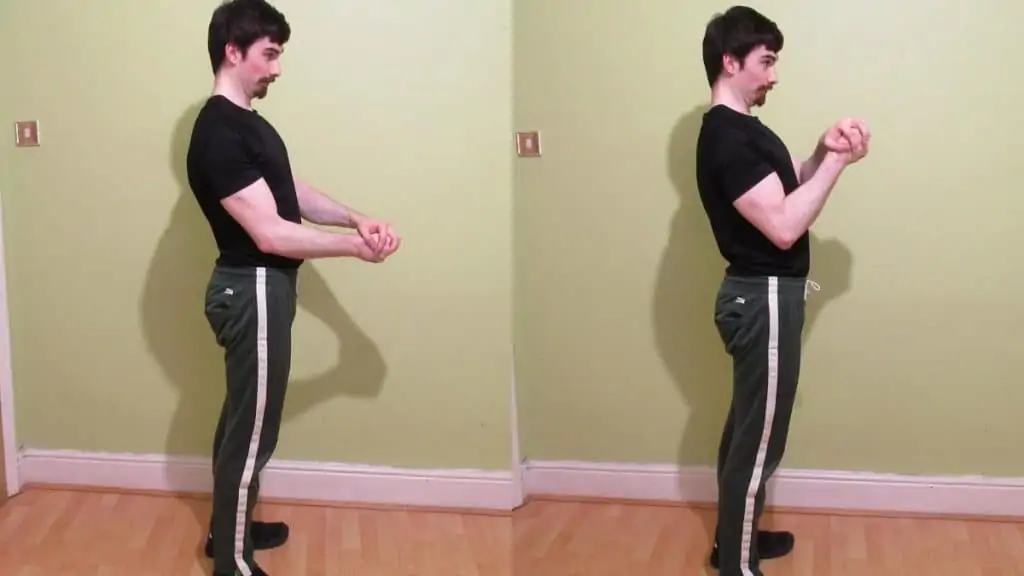
If you want to build your biceps and forearms simultaneously, then this is the exercise for you. If you perform this movement regularly, your arms will become noticeably more three-dimensional from just about every angle.
Learn more in our bodyweight bicep exercises guide.
- Stand up straight and place both arms by your sides.
- Then, flex one of your arms to 90 degrees while actively trying to push it down with your other arm.
- Now, as you’re lowering your working arm back to the starting position, push it upwards with your other arm while it’s still moving down.
- Push in both directions as hard as you can and repeat for sets of 20 reps.
2. Bodyweight reverse curl
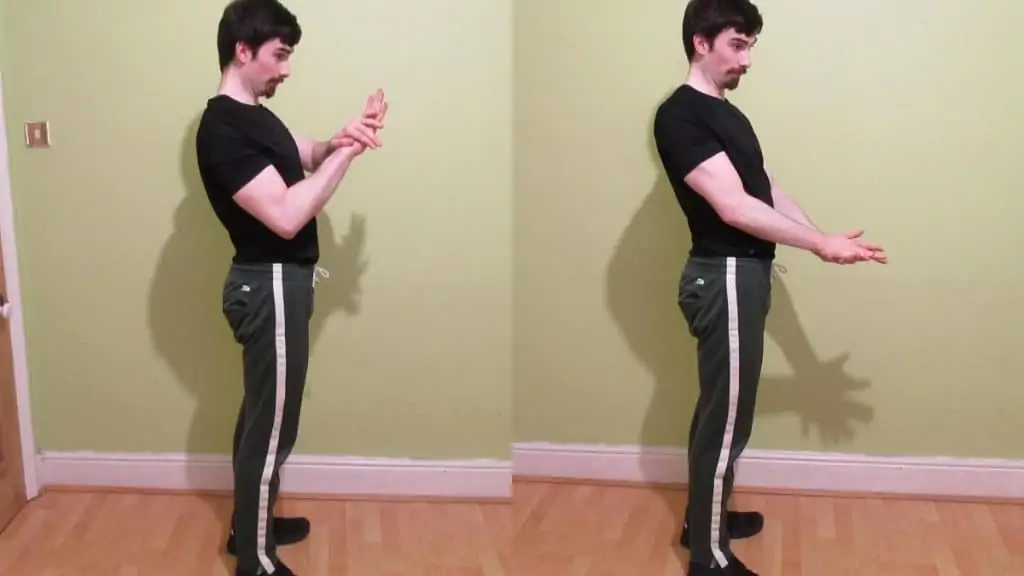
Out of all the body weight forearm exercises, this is my favorite drill for bringing up the brachioradialis, which sits on top of your forearm. When well-developed, this muscle alone can truly transform your arms.
As you’ll see, this exercise is very similar to the first but with a twist: We’re getting a bit less bicep activation but way more forearm tension. So go easy on yourself, to begin with.
- Place both arms by your sides.
- Flex one arm until it reaches 90 degrees while simultaneously trying to push it downwards with your other arm.
- Lower your working arm back down to your side while actively pushing it back up with your other arm.
- Repeat for 20-30 reps, and don’t forget to train your other arm!
3. Forearm plank
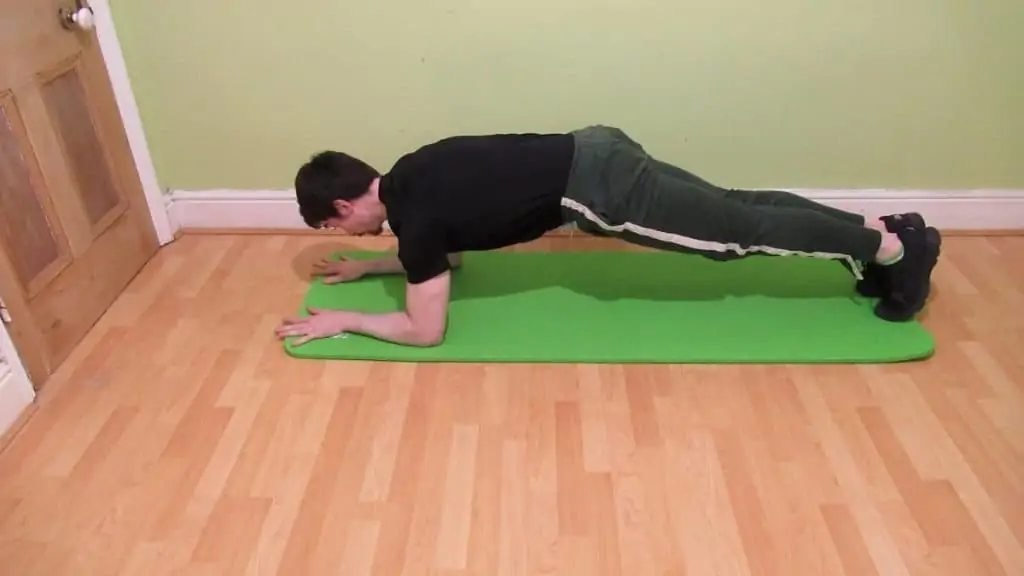
If you want to sneak in some ab work while also building static forearm strength, then give this exercise a try in your next calisthenic forearm workout. Since you don’t get that much resistance from it, save this movement for a finisher/burnout or do it as a full-body warm-up.
- Get into a pushup position by placing your hands out in front of you and your feet back and together. You might want to use an exercise mat for extra comfort.
- Then, shuffle your arms closer to your torso and rotate your hands into a neutral position so that your forearms are now resting on the floor.
- Pin your elbows into your sides and hold this position for 30-60 seconds (or as long as your abs and forearms can take it).
4. Close-grip pull up
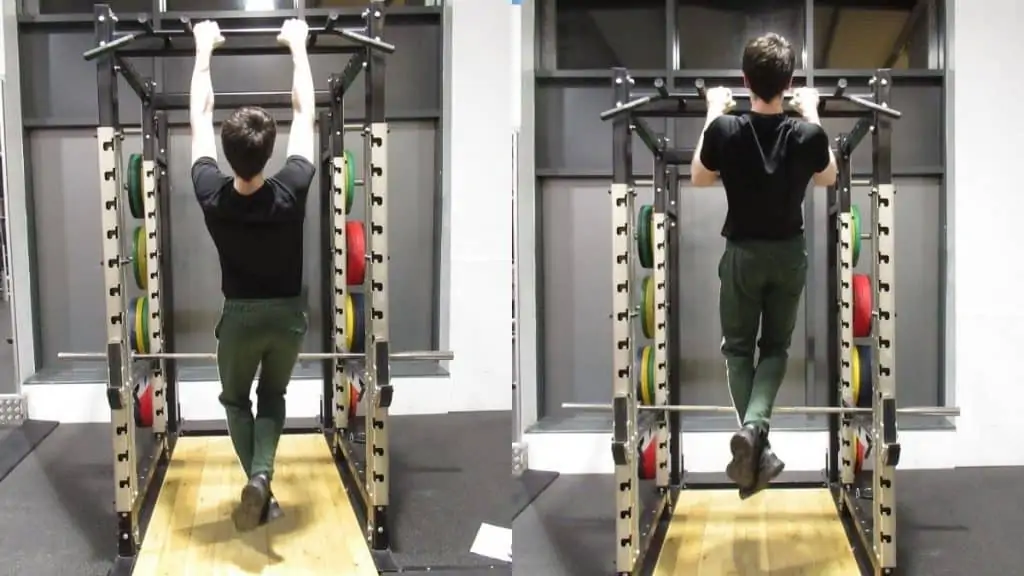
This is the dark horse of all the forearm bodyweight exercises because it’s quite literally amazing for a number of different muscles. Since your hands are close together (but not touching), you get an incredible range of motion (ROM) for the upper lats.
But, because you’re going to be using an overhand grip, your brachioradialis and other forearm extensors are going to put on some serious mass. After all, they have to effectively pull your whole body up.
- Grab a pull-up bar and place your hands a couple of inches inside shoulder width.
- Think about driving your elbows down to the ground as you pull your upper chest towards the bar.
- Keep going until you feel an intense contraction in your lats and arms.
- Lower yourself under control and repeat for 6-12 reps. Don’t be afraid to add external resistance to this one via a weighted vest once you master the bodyweight version.
5. Chin-ups
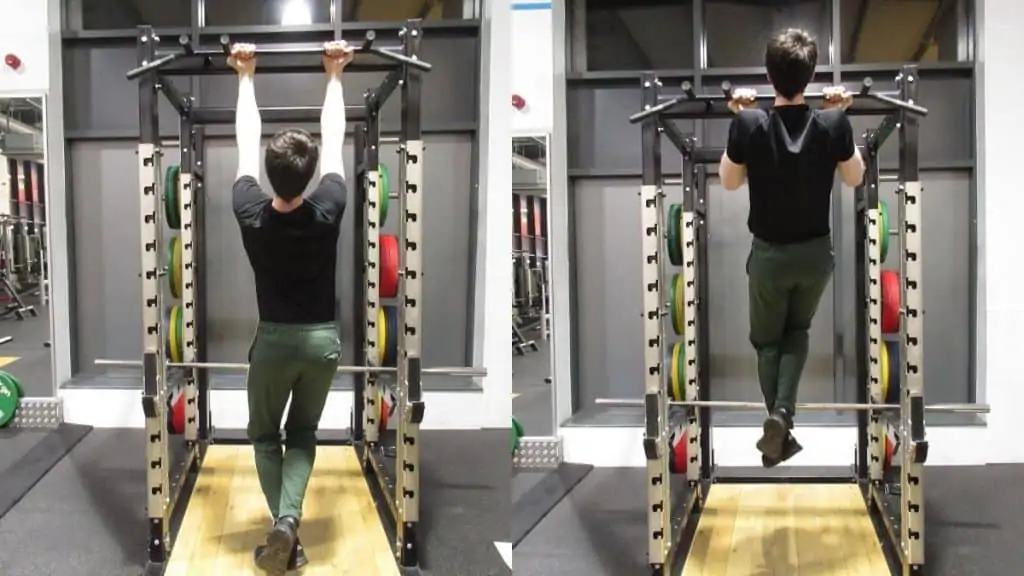
It’s one of the more obvious body weight forearm exercises, but that doesn’t make it any less effective.
We already know that bicep curls are solid forearm-builder. And because chin-ups are essentially like heavy bodyweight biceps curls, we’re going to receive some decent forearm stimulation from them, too.
Your hand and gripping muscles—however small they may be—will also get their fair share of work during any chin-up or pull-up variation. In the long run, having good, reliable grip strength will enable you to perform more advanced calisthenics exercises.
- Grab a pull-up bar with an underhand, shoulder-width grip.
- Then, while looking straight ahead, pull your upper chest towards the bar by flexing your arms and contracting your back.
- Come straight back down by allowing your lats and biceps to stretch under control.
- Repeat for sets of 6-12 reps. Again, feel free to add extra weight to increase the difficulty.
6. Forearm flex
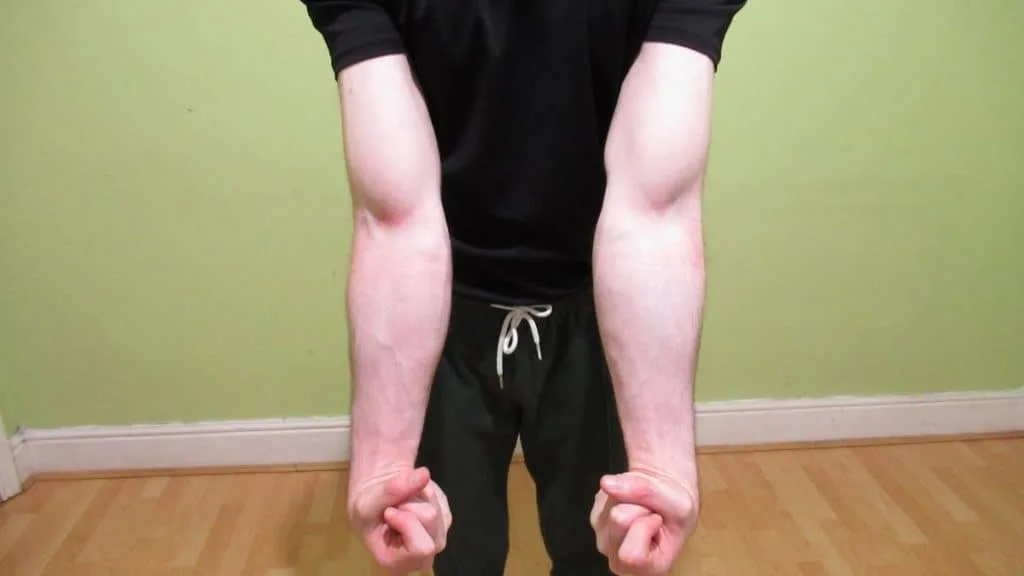
I don’t think I invented this exercise, but I’ve never seen it published online before. Anyway, this bodyweight forearm exercise couldn’t be simpler. It’s a great way to get blood into the muscle and increase your lactic acid tolerance, which is useful for achieving more reps per set.
Suffice to say that you want to do this exercise at the end of your bodyweight forearm workout.
- Place your arms by your sides.
- Then, bend your wrists towards the underside of your forearms and squeeze them as hard as you can.
- Hold this contraction until the burn becomes too intense (aim for 30-60 seconds) and then repeat for another set.
- Alternatively, repeatedly flex and relax your forearms for a similar effect.
7. Towel pull up
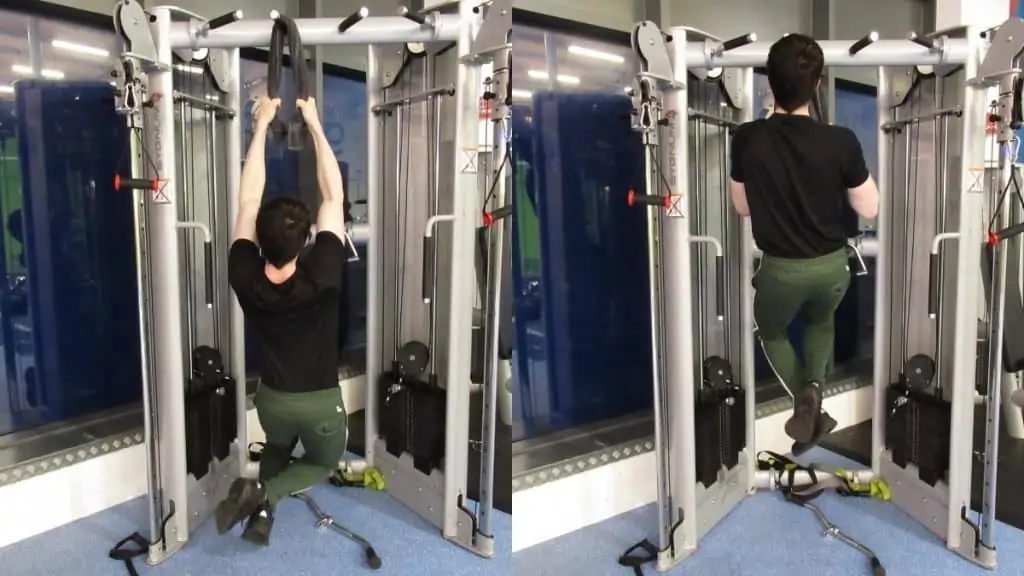
This exercise is the easiest to do at a gym where you have plenty of space. However, I don’t see why you couldn’t do it on a sturdy tree branch or some soccer goals.
- Place 2 gym towels over your pull-up bar at shoulder width.
- Grab both ends of the towels with the corresponding arms.
- Pull yourself up to the bar using your arms and back.
- Then, lower your body under control and repeat for sets of 6-12 reps. If you can’t do 6 reps straight away, then it’s okay to do fewer reps until you build up your strength.
8. Towel row
If conquering towel pull-ups seems like an impossible mission (or if you’d rather emphasize your traps), then give the towel row a shot. This back-builder will develop incredible grip strength and put some serious muscle on your forearms to boot.
Again, it’s easiest to do if you have a barbell, but you can also get inventive if you’re not training in a gym. I’m sure some parks have various equipment that you could use as an Olympic barbell.
- Place a barbell at waist height (you can also use a Smith machine bar).
- Wrap 2 towels around the bar at shoulder width.
- Sit just behind the bar and then grab both towels.
- Now, shuffle your feet out in front of you and fully extend your legs.
- Ensure that the bar is centered roughly over your mid-chest.
- While looking at the ceiling, drive your chest towards the bar.
- Hold the contraction for a split second and lower your torso back down.
- Repeat for sets of 8-15 reps, or feel free to go even higher in repetitions to accumulate more volume per set.
9. Doorway row
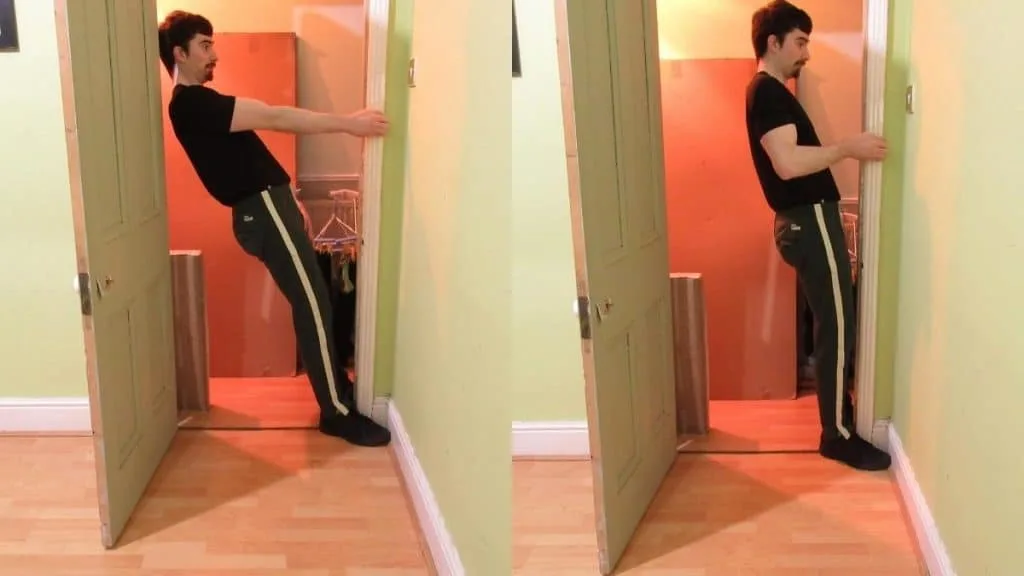
Anyone who’s ever done bodyweight forearm exercises or any type of calisthenics at home has surely considered this intuitive exercise.
You can do it one-handed, and you can also change your foot positioning to increase or decrease the difficulty. However, if you’re trying to work your forearms, then there’s one critical adjustment that you need to make.
- Grab one side of the door frame (the casting) with a pinch grip. This is to say, grab it between your thumb and fingers (don’t use the palm of your hands).
- Shuffle your feet closer to the doorframe, and then lean your torso back a bit.
- Then, drive your body towards the doorframe and contract your upper back as you bring your sternum close to the casting.
- Hold the contraction for a brief second, and then allow your torso to once again stretch out to its original position.
10. Dead hang

No body weight forearm workout is complete without the dead hang. It’s the ultimate test of grip endurance, and because of the excellent time under tension, it’ll also add some nice size too.
If you’re feeling brave, crazy, or just find the bodyweight version too easy (unlikely at the end of a workout), then you can also wear a weighted vest.
- Grab a pull-up bar with an overhand, underhand, or neutral grip (your choice).
- Pull yourself up slightly so that your arms aren’t completely shrugged up. Your elbows should still more or less be fully locked out.
- Look forwards the whole time (and not up at your aching hands) to maintain good posture.
- Hold this position for as long as you can. Alternatively, do a few sets of 30 seconds to get less burn but more time under tension overall.
Body weight forearm workout
I’ve handcrafted two body weight forearm workout routines that will put size on your lower arms while also improving your general strength (it’s hard to completely isolate the forearms with bodyweight training). [1]
Workout 1: Forearm focus
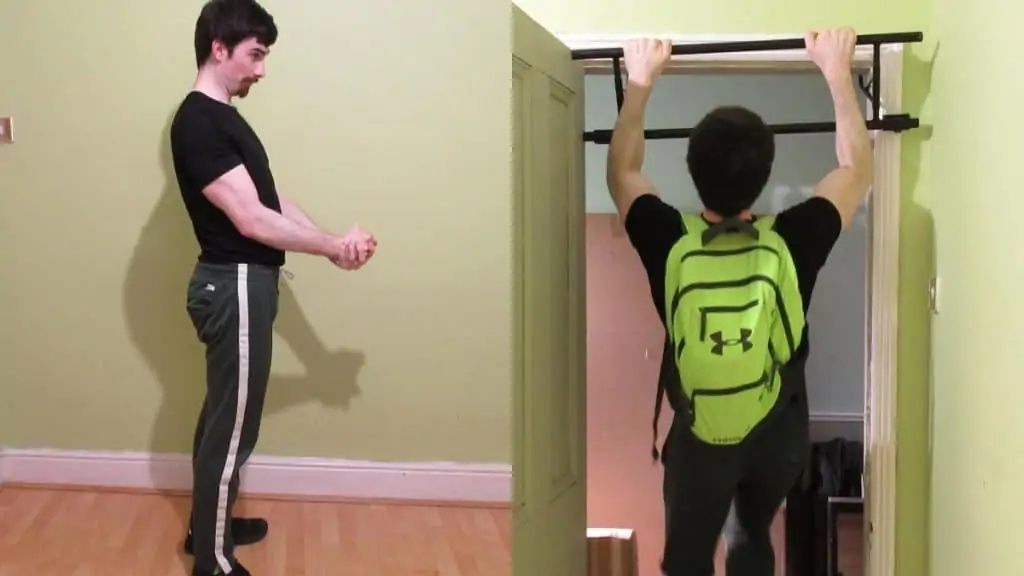
If you’re already decently proficient in most things calisthenics, then give this selection of forearm bodyweight exercises a try. I’ve purposely left out chest and leg work so that you can devote your attention to bringing up your forearms, which, of course, is presuming that they’re actually a weak point for you.
1: Close grip pull-ups — 3 x 6-12 reps
2: Towel rows — 3 x 8-15 reps
3: Bodyweight hammer curl — 3 x 20-30 reps
4: Bodyweight reverse curl — 3 x 20-30 reps
5: Dead hang — as long as possible
6: Forearm flex — as long as possible
Workout 2: Overall strength

Simply going about your usual calisthenics routine is enough for forearms if you have a smart exercise selection. For example, anyone who can do close grip pull ups with 60lbs on a belt is going to have some decent forearm extensors.
Likewise, if you can do dead hangs for a minute or more (especially for multiple sets), then your forearm flexors won’t be too shabby, either.
1: (weighted) close-grip pull-ups — 3 x 6-12 reps
2: (weighted) push-ups — 4 x 8-15 reps
3: Inverted row (towels are optional) — 3 x 8-15 reps
4: Bodyweight hammer curls — 3 x 20-30 reps
5: Pistol squats — 3 x 3-10 reps
Related workouts
- Forearm and bicep workouts
- Bicep tricep and forearm workout
- Forearm workout for women
- Kettlebell forearm exercises
- Forearm workouts with resistance bands
- Shoulder and forearm workout
Forearm calisthenics tips
Even though you’re not pumping heavy barbells, even an average calisthenic forearm workout is challenging because you’re still using a lot of resistance. [2] So, to help you get the most from your training, I’ve put together these 3 tips for more gains and faster progression—specifically for the forearms.
Focus on compound lifts
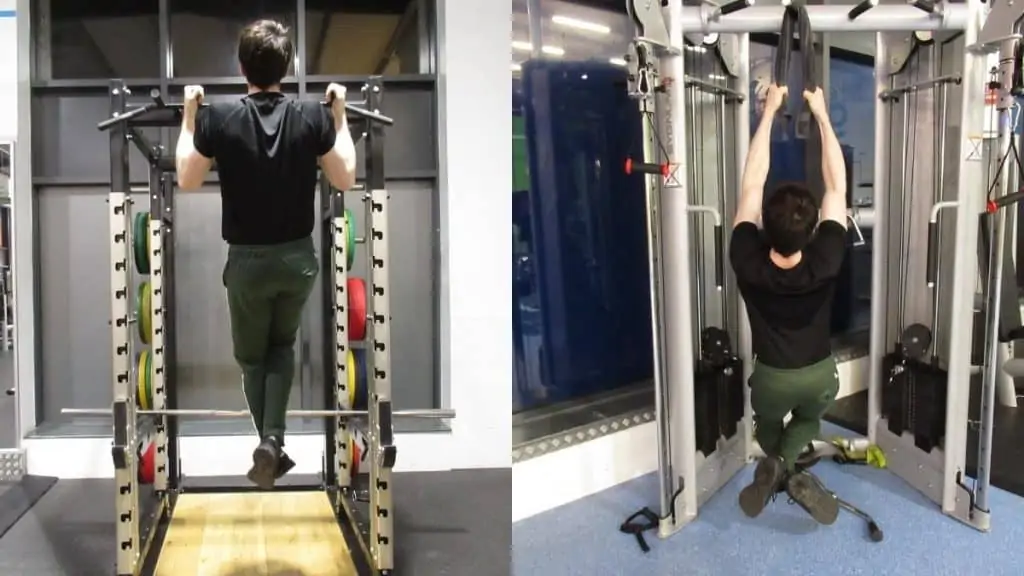
It’s almost cliché advice, but in my experience, it always does the job. Too many novices are unsatisfied with their forearm development, and so they want to rush in and start doing a million different isolation exercises.
Listen, fellas, the forearms are naturally more developed than other muscle groups since they’re active in everyday life. As such, they can take a while to grow significantly because simply contracting them isometrically (like in push-ups or dips) doesn’t provide enough tension to stimulate new growth.
However, if you can gain strength on the right kinds of compound movements—pull-ups, rows, dead hangs—then you likely won’t need to do any special body weight forearm exercises. [3]
Use a narrower grip
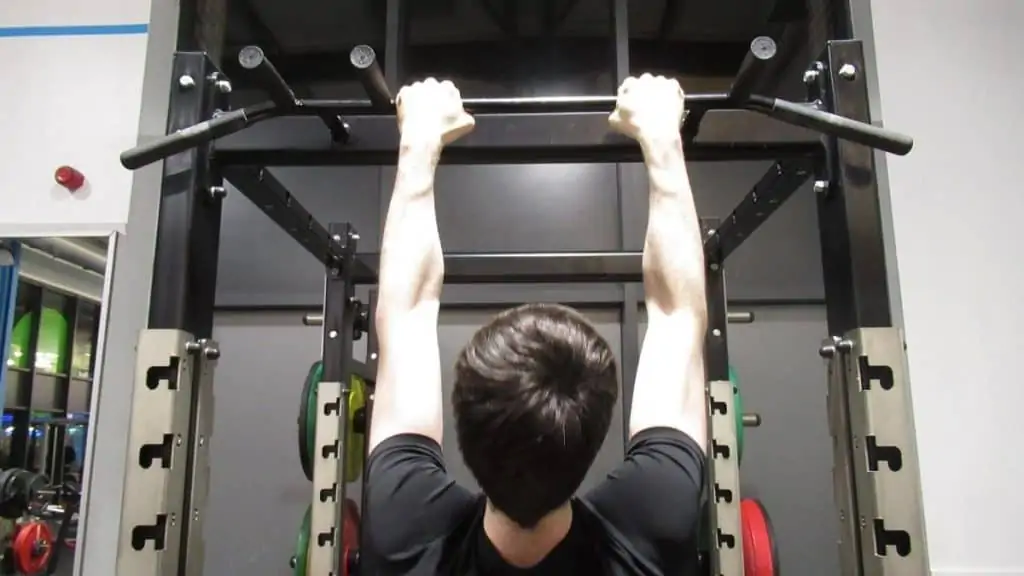
When someone wants to make pull-ups or chin-ups easier, the classic advice is to use a closer grip because it involves more of the upper arms.
Well, remember how I said that chin-ups are basically like a bodyweight biceps curl?
And remember how I also said that curls are a surprisingly good forearm exercise?
Well, you can use this knowledge to your advantage by doing a mixture of close-grip pull-ups (for the extensors) and shoulder-with chin-ups (for the flexors).
Simple and effective. You’ve got to love calisthenics.
Add extra resistance
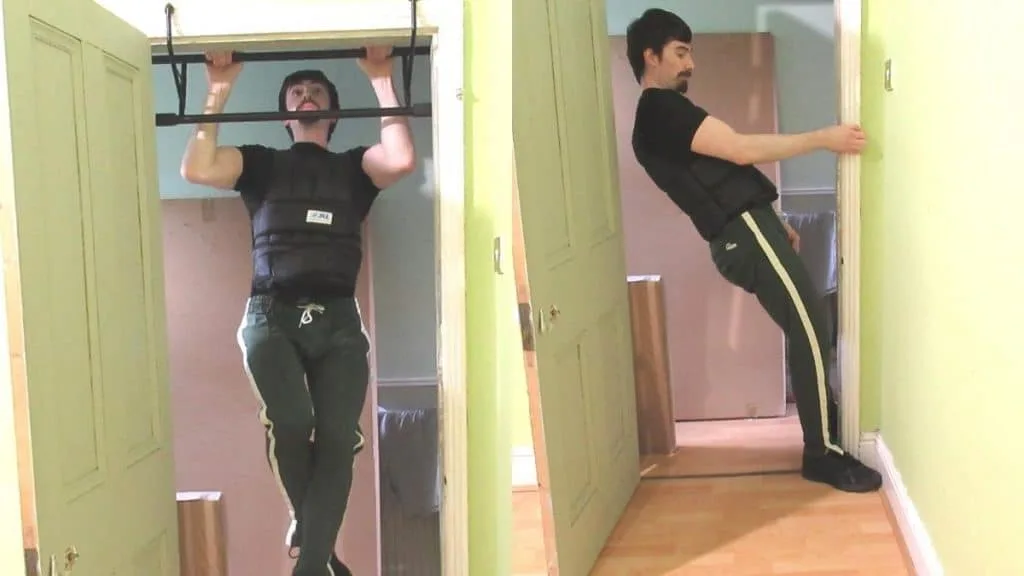
In a world where it seems like everyone is just chasing the pump in the gym mirror, proven training principles like progressive overload sadly get left behind.
All else being equal, someone with stronger muscles will also have bigger muscles. [4]
So if you want to improve your forearms, then it’s within your best interest to add resistance to your bodyweight forearm exercises and main compound lifts.
The verdict on bodyweight forearm exercises
While there are few specific bodyweight forearm exercises like squeezes/weightless flexes, the best growth will come by focusing on your compound pulls and exercising your patience. The trick is to modify common exercises like rows and pull-ups to be more forearm-focused.
And usually, this means bringing your grip in a few inches. Not only will this put your lower arms through more of a forearm calisthenics workout, but it’ll also make you instantly stronger because now you have your arms to help your back lift your body.
References
- Davies, D. (2020). Pack on Muscle at Home with These Bodyweight Exercises and Workouts. Men’s Health. Retrieved from https://www.menshealth.com/uk/building-muscle/a756325/10-best-bodyweight-exercises-for-men/.
- Cirino, E. (2017). 8 Calisthenics Workouts for Beginners. Healthline. Retrieved from https://www.healthline.com/health/fitness-exercise/calisthenics.
- Goncalves, A., Gentil, P., Steele, J., Giessing, J., Paoli, A., & Fisher, J. (2019). Comparison of single- and multi-joint lower body resistance training upon strength increases in recreationally active males and females: a within-participant unilateral training study. European Journal Of Translational Myology, 29 (1). https://doi.org/10.4081/ejtm.2019.8052
- Contreras, B. (2015). A Larger Muscle is a Stronger Muscle Due to Increased Strength and Leverage – Bret Contreras. Retrieved from https://bretcontreras.com/larger-muscle-stronger-muscle/.

